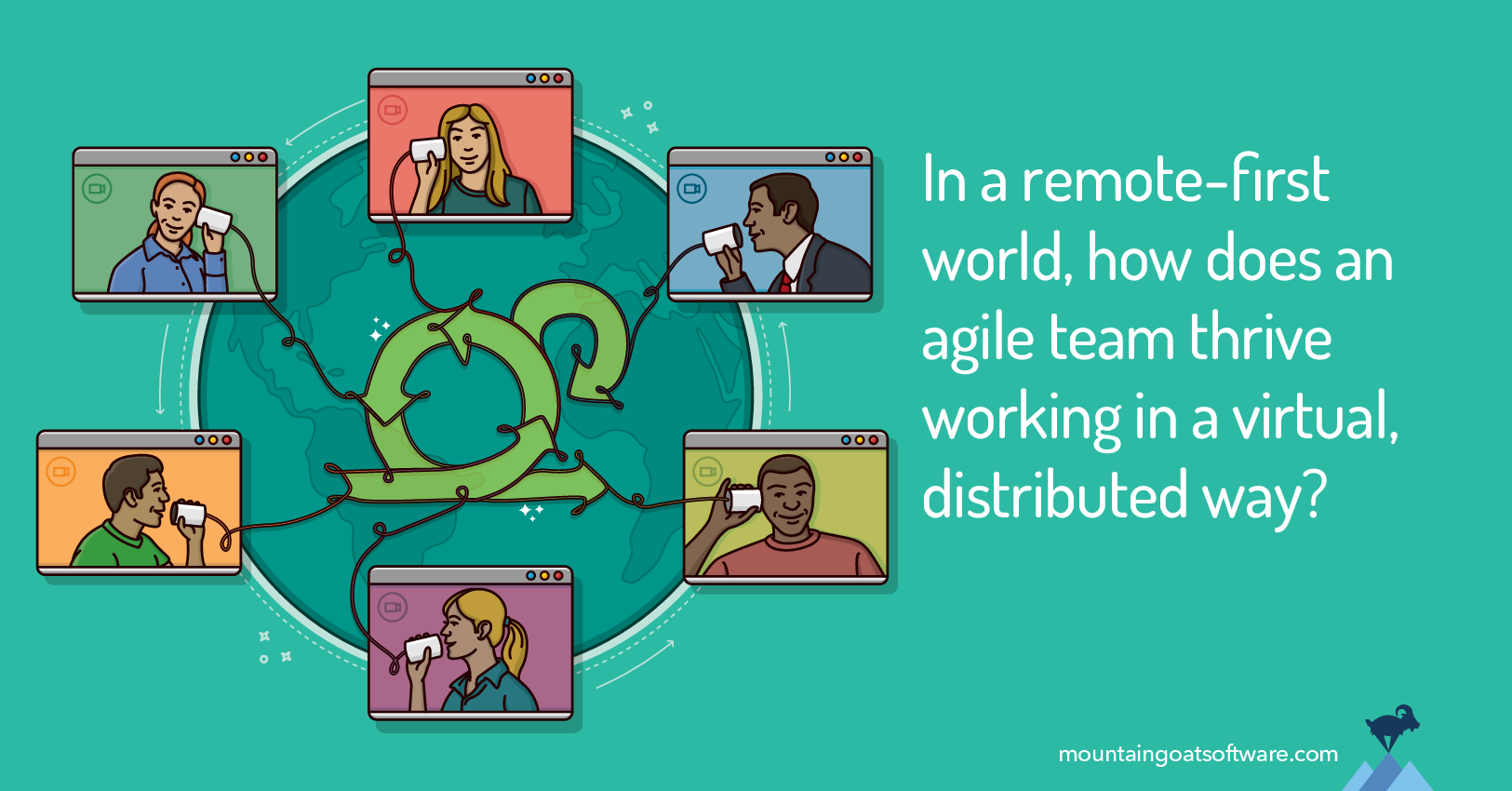In March of 2020, I was on the first stop of a multi-leg business trip to train people in three different cities when I got the news that the next two locations had canceled their training with me. I didn’t know it at the time, but that first stop would be the last in-person class I would teach until some still-unknown point in the future. From that day forward and for the foreseeable future, I was now a remote worker.
Many of you likely have similar stories of how you were suddenly part of a distributed Scrum team with little time to prepare. We all became instant experts in using video conferencing tools like Zoom and spent far too much time looking for the perfect virtual background screens to use. (Did we mention we’ve got you covered with our custom Scrum and agile zoom backgrounds?)
Remote Software Development Teams Predate Covid
It would be a mistake, though, to assume that remote Scrum began with Covid. In fact, the trend of remote work environments was growing at an incredible rate prior to lockdowns. A study from flexjobs / Global Workplace Analytics found that prior to Covid, there had been a 44% growth in remote work in the last five years and a 91% growth in the last ten years. In the span of one year (2016–2017) remote work grew 7.9%.
And then Covid caused a dramatic shift to remote work. The US Bureau of Labor Statistics reported that the total percentage of employed persons working from home in the US nearly doubled during the pandemic’s rise in 2020, topping out at 42%. This outpaced projections from that survey I mentioned earlier, which had estimated the total to settle at about 30%.
I think we can interpret from this that there is a new normal. Some will return to offices, but remote work will remain much more prevalent than it was pre-Covid. Distributed development teams are here to stay.
5 Ways to Be Agile with Remote Teams
What does this mean for us as agilists? Agile frameworks weren't designed for mostly remote workers: we value face-to-face communication and co-located environments to foster the kind of agile teamwork where teams collaborate early and often.
Let’s talk about how we can retain our agile principles and agile practices in a work environment the Manifesto authors never intended to be our default. I’ve been strategizing Scrum implementations to meet this unique set of challenges and I have ideas to help you continue to thrive.
Here’s how you can make the most of your remote working environment:
- Communicate more frequently and in new ways
When we work alongside others, it’s very simple to lean over and ask questions or share information. When we are all in our own spaces working on distributed teams, quick and easy communication becomes a challenge we need to overcome.
Of course you’ll take advantage of the tools available to enable new ways of communication, but also be clear about the expectations for communicating. Which tool is to be used for each type of communication and how soon is a response expected?
Setting these expectations in advance prevents unneeded heartburn later. When in doubt, over-communicate. It’s much better to get the same piece of information twice than to never get it at all. - Value individuals and interactions over processes and tools
When Covid hit, a proliferation of online tools emerged to help solve remote team problems. Many a Scrum Master spent time trying to figure out how to integrate these new collaboration tools into their process.
The problem is that they got a case of the tail wagging the dog. If we truly value individuals and interactions over processes and tools, we should never start with a tool and then force our process to adopt it. Rather, be agile: determine which issues you have working remotely and find the right solution for only those issues.
There are great tools out there, some that will even help try to recreate a virtual office space your teams can fill (topia.io, teamflowhq.com, sococo.com). But starting with a tool is breaking one of our foundational agile principles. - Establish remote team agreements
Agile teams have long made use of team agreements (or team working agreements). These set ground rules for the team, created by the team and enforced by the team.
When our working environment shifts as much as it has recently, consider establishing some new team agreements specifically designed to address remote work. Examples? On-camera expectations, team core working hours (especially if you’re spread across multiple time zones) and setting aside focus time during which interruptions are kept to a minimum. - Build your team
One of the huge disadvantages of a remote team is the lack of personal connections that are made just grabbing a cup of coffee or standing around the water cooler. Remote teams need to be deliberate about counteracting isolation.
Consider taking the first few minutes of a meeting to talk about anything non-work related. Set up a time for a team show-and-tell in which each team member can share something from their home or background in their home office that matters to them.
Find excuses for the team to share anything that helps teammates get to know each other more—as human beings, not just co-workers. (To help you get started, we compiled 25 questions for teammates to get to know each other better) Numerous studies have shown that the more a team connects on a personal level, the more they will show up for each other and connect in their interdependent work. - Experiment, inspect, and adapt Recognize it’s a new time. The challenges we face with our teams today differ from team issues before. That means that the answers for your particular situation may have not been discovered yet.
That’s your job. We’re walking a new path where no decade of case studies can show you the road map.
What we do have is empiricism. We should always be experimenting with new things and then inspecting and adapting based on those experiments. You might just be the person or the team to find a pattern of work previously unknown and solve a set of remote working problems for many teams.
The only way to find it is to try. Experiment! Bake experimentation into your team’s DNA. Help them to be comfortable trying new things and then analyzing results to see how well they worked. That is truly the only way your team will find the answers to any problems working remotely.
Last update: February 12th, 2025









